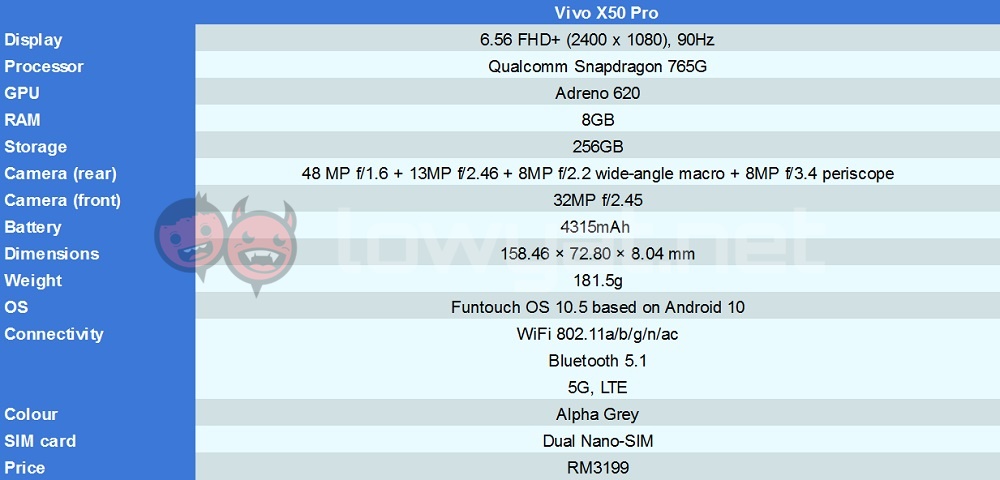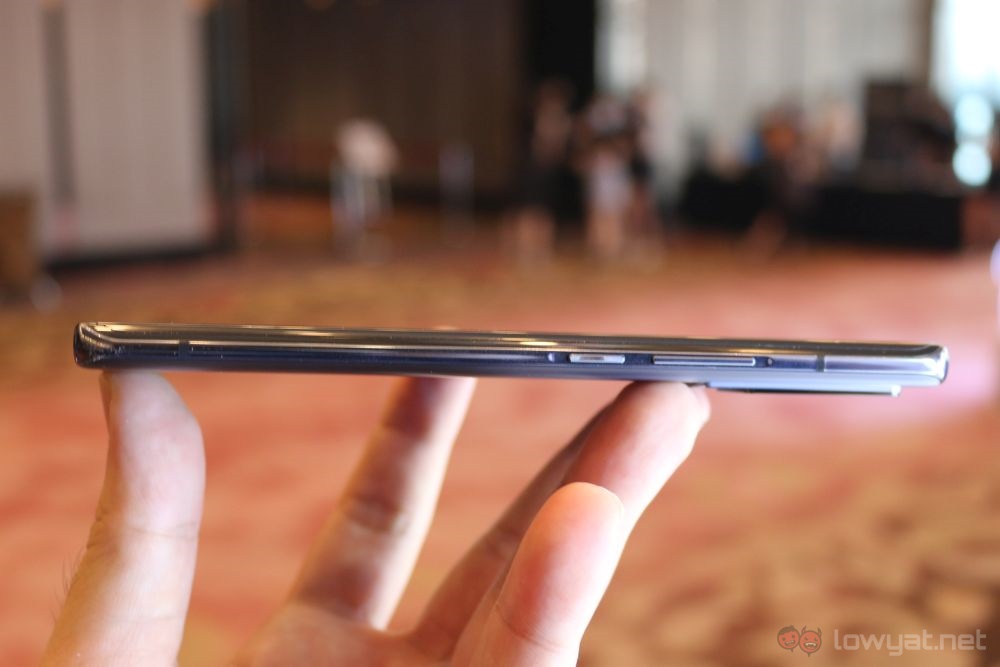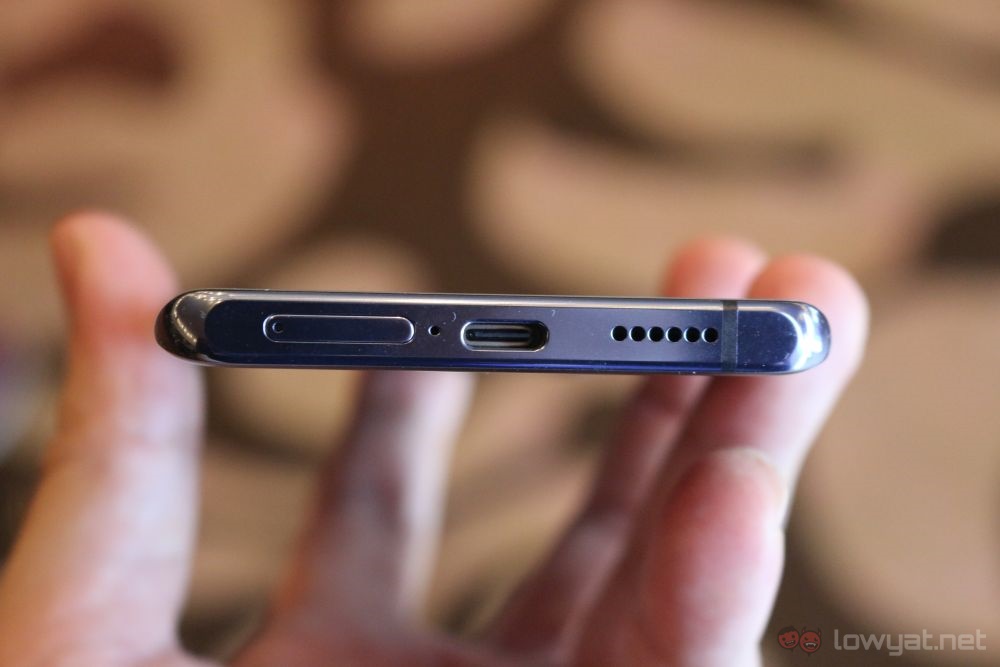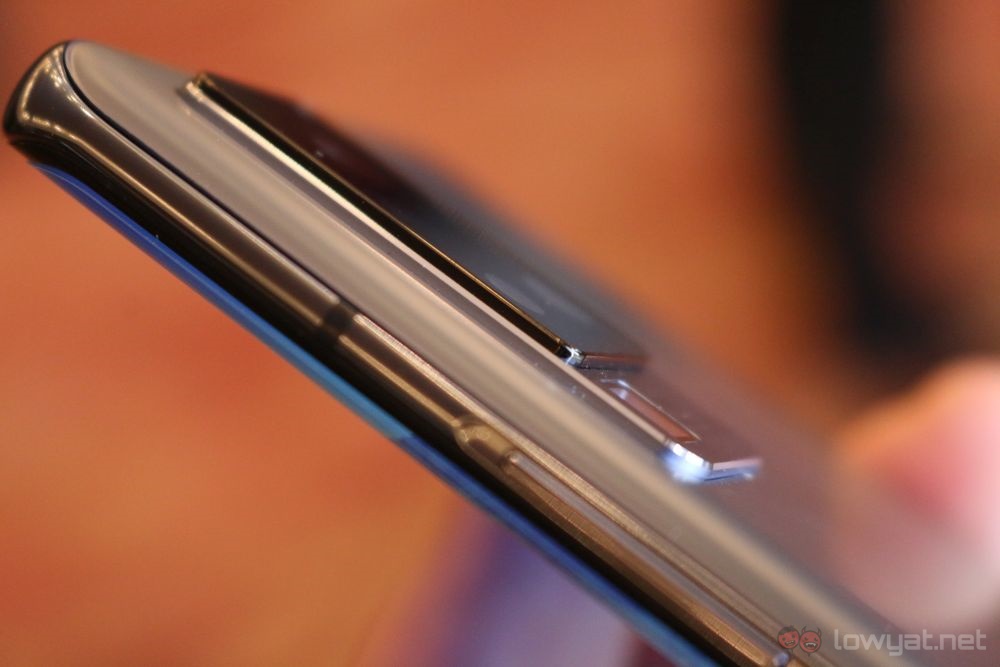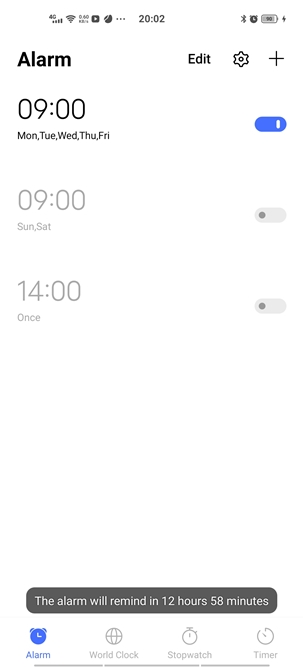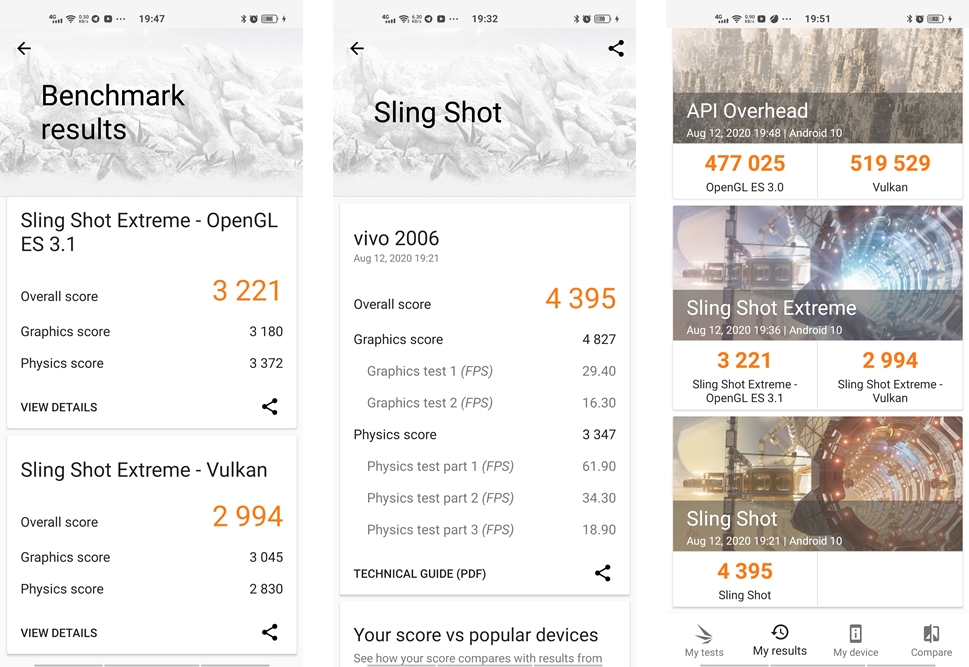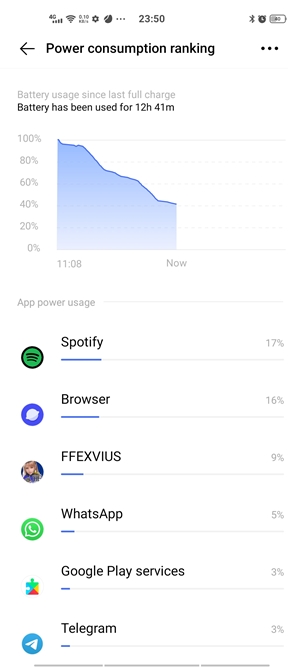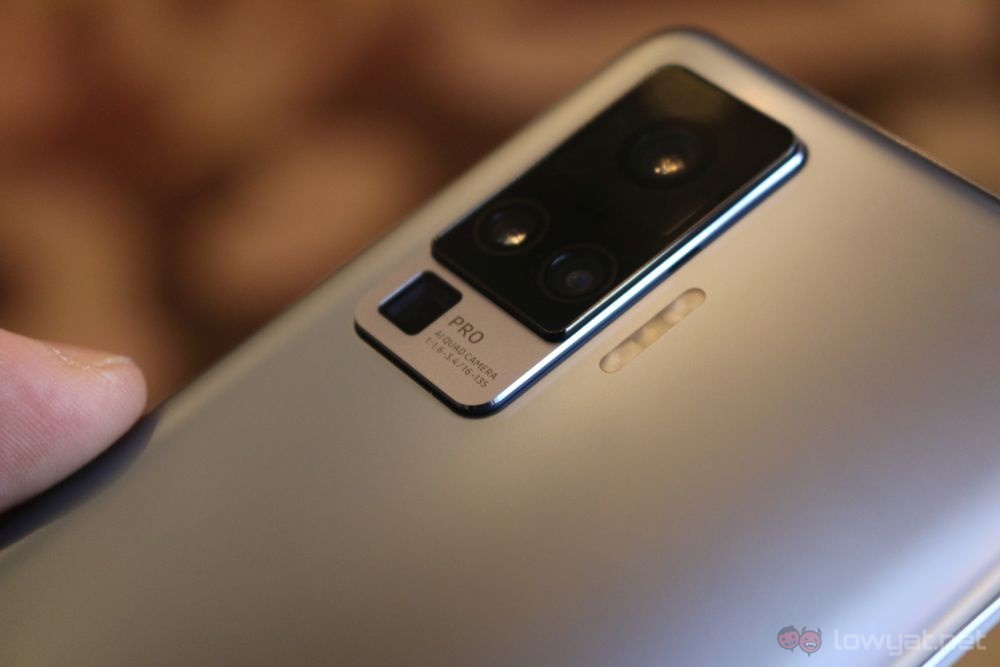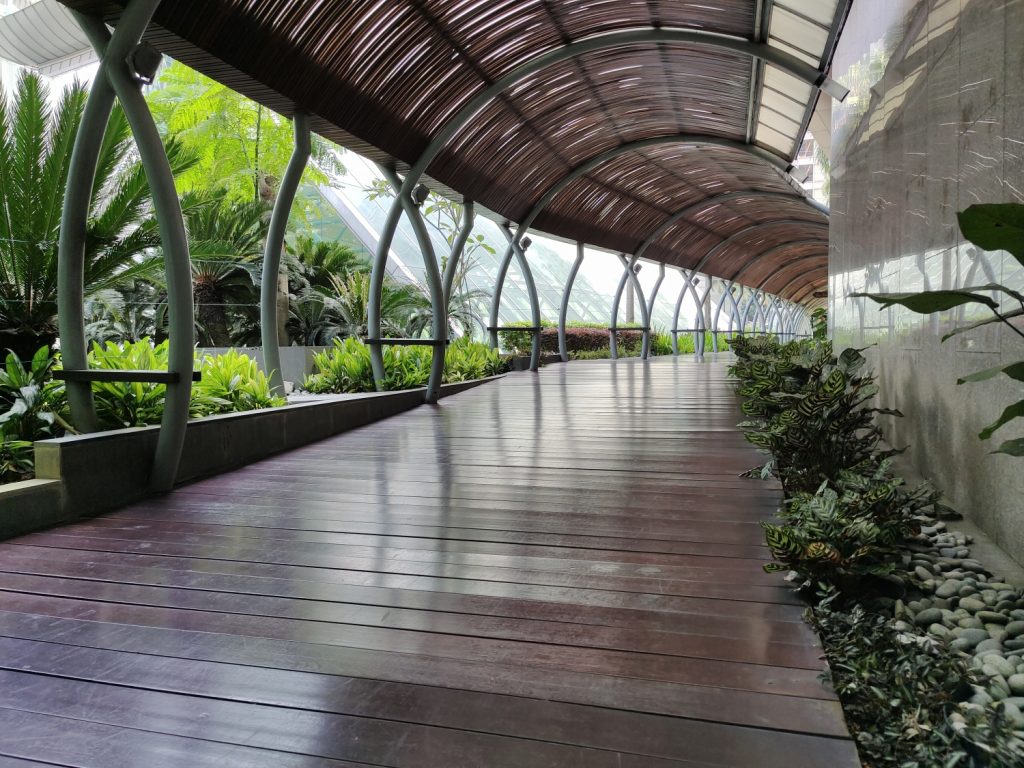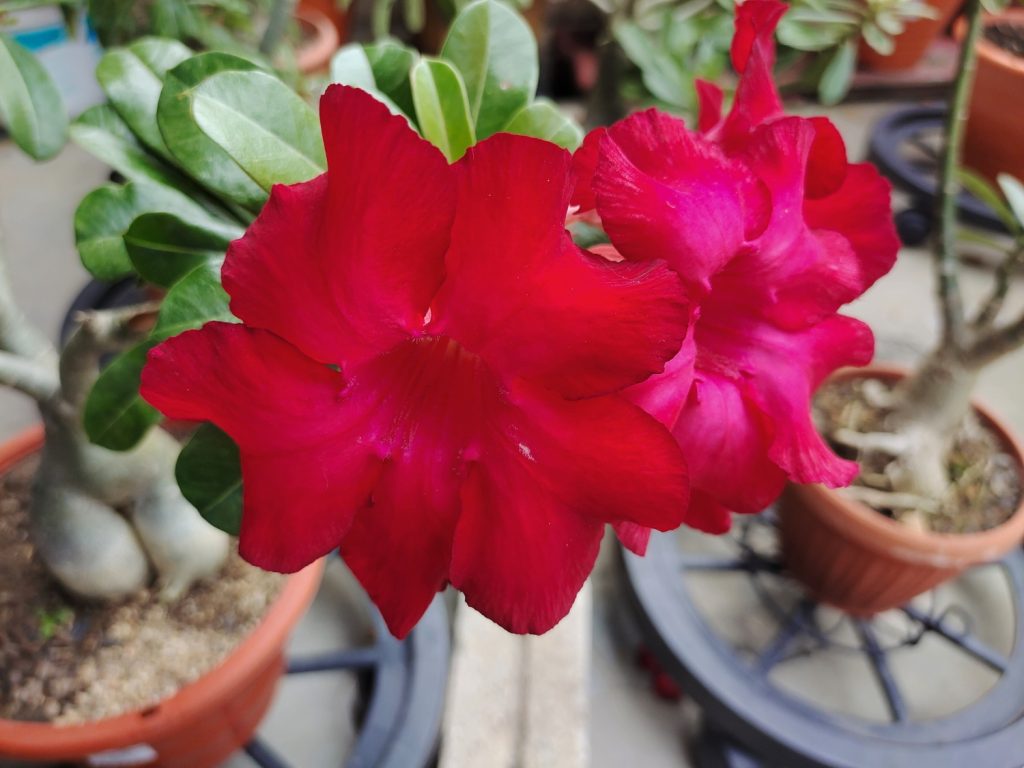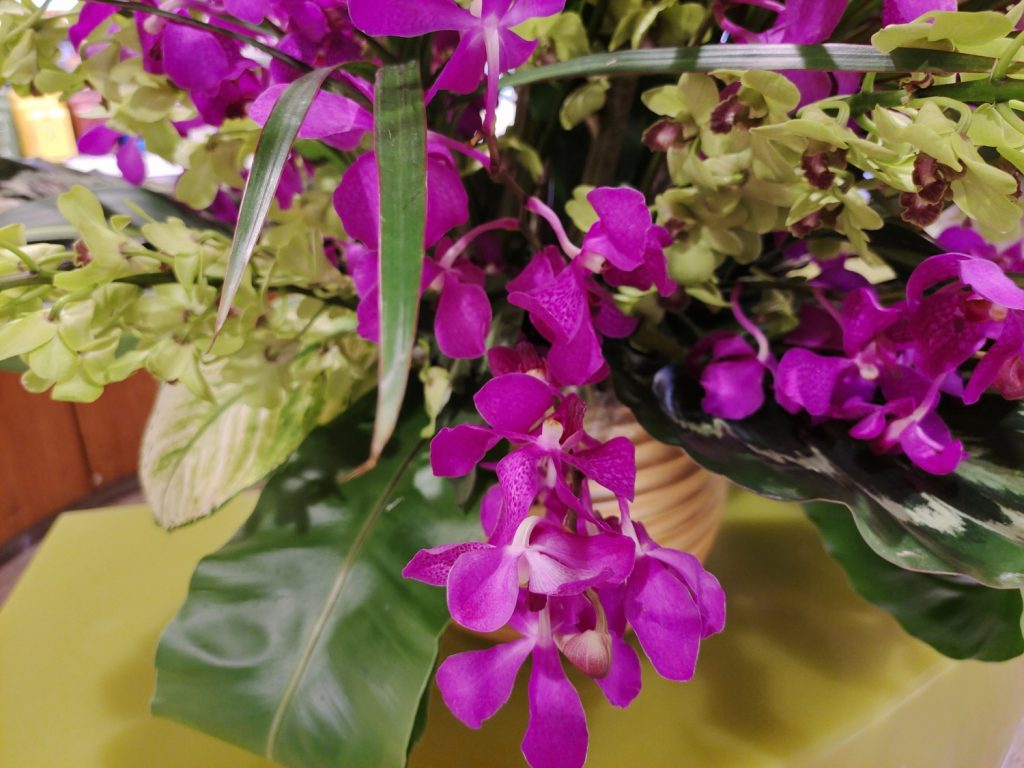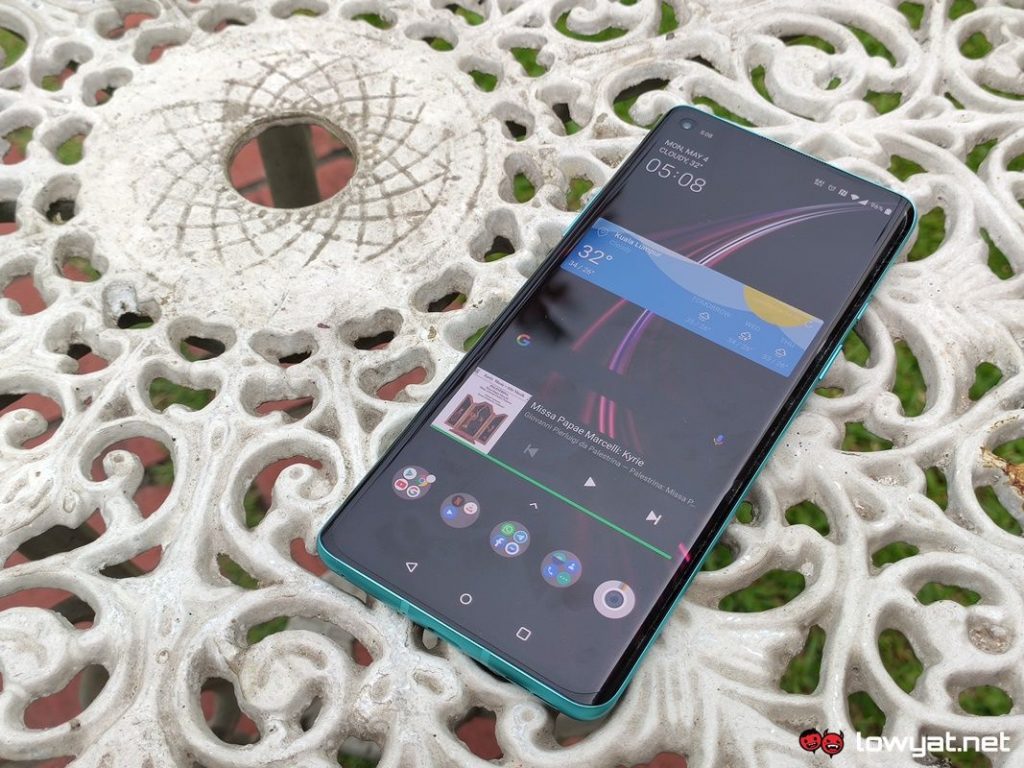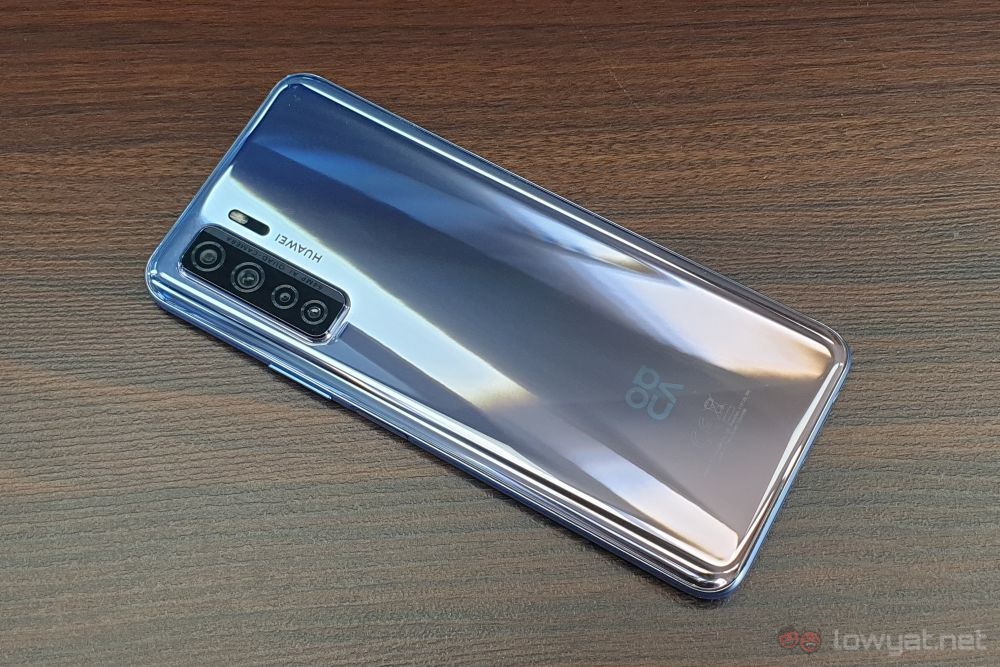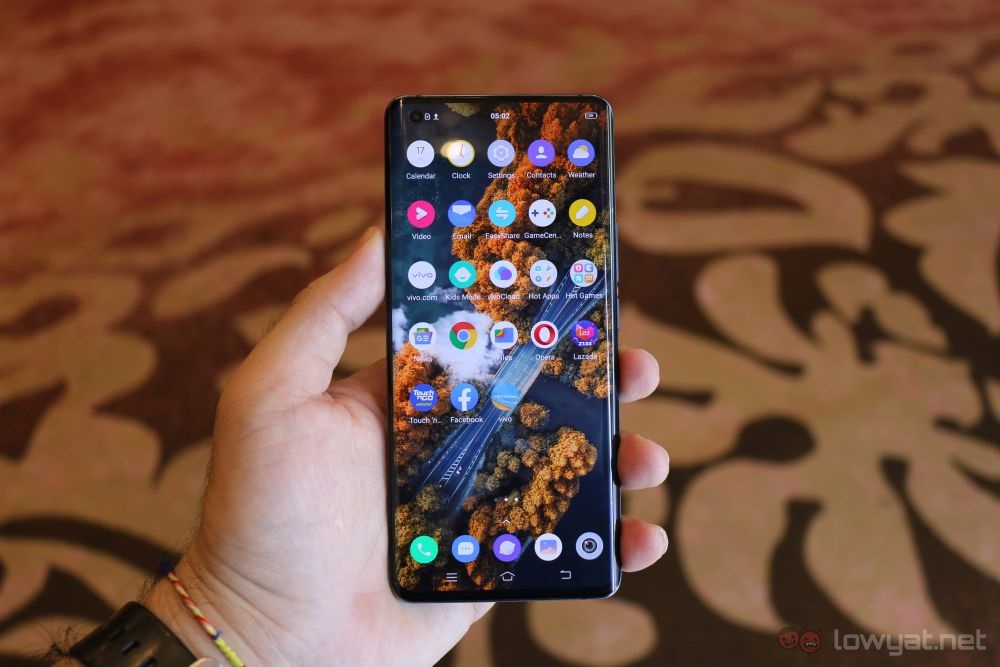Of course, that’s not all the phone has to offer to those who buy it. So let’s take a broader look at it before we get to its main draw.
Specifications
Looking at the table above, you’ll see that the price doesn’t quite fit the rest of the phone. Of course, the Vivo X50 Pro has the gimbal camera system as the ace up its sleeve. This then leads to the next obvious question: is it worth it? Well, it depends, but we’ll get to that in a bit.
Design
From a design perspective, Vivo gave the X50 Pro curved edges on both sides. This gives the phone a premium look and feel, even if the latter is not necessarily a comfortable one. Fortunately, the phone comes with a case in the box, which alleviates this to a certain degree. For the most part, you’ll find pretty much everything where you expect them to be. The power button and volume rocker are on the right side, while the USB-C charging port, the mono speaker grille and the SIM tray are at the bottom. No 3.5mm audio jack here, unfortunately, which is a shame.
At the back, you’ll find the camera island at the top left corner. This one has quite the odd design choice to it, where the entire island is elevated – which isn’t unusual. But what is peculiar is a second level of elevation, dividing its four cameras. On the first level, you’ll see the periscope zoom lens. The other cameras, including the main one with its gimbal system, sits on the higher elevation. The LED flash sits outside of the camera island altogether, though positioned right next to it.
In front, the display has a punch hole camera cutout on the top left corner. Nothing too unusual there. With its aspect ratio sitting at 19.8:9, it stays out of the way most of the time while you have the standard 16:9 content playing. At the bottom, the display also comes with a fingerprint sensor. The Vivo X50 Pro also feels quite light in hand. This may have something to do with the weight distribution of the phone, which is surprisingly well-balanced, considering its cameras.
User Experience
Continuing from the point above, the well-balanced weight distribution of the phone means you can have it in your hand for extended periods of time without feeling any strain. And the 90Hz refresh rate of the screen does sometimes make you lose track of time as you scroll through your favourite social media.
Vivo’s Funtouch OS facilitates this very well too. While it does have its own gesture controls that are reminiscent of Huawei’s EMUI, you get the option to switch it back to the more conventional Android gestures. Having options is always nice, and especially so in this case. Though the overlay does sometimes show system messages that are… let’s just say grammatically interesting.
In terms of performance, the Qualcomm Snapdragon 765G chipset in the Vivo X50 Pro falls within the expected range. At least, on the synthetic benchmark front. In real world use though, the phone actually performs a lot better than its chipset and 8GB of RAM would suggest. While playing Final Fantasy Brave Exvius, the game runs almost perfectly smoothly. Which is interesting, as this is a particularly RAM-intensive game, and many other phones with better chipsets struggle to run smoothly.
Battery life is where things get a little weird. With heavy use, you can easily end the day with about 20% charge or so left, from 100%. But with conservative use, it’s difficult to stretch a single charge to run for two full days. Putting it through the usual video loop test, the phone also lasted for 15 hours and 30 minutes. As for charge times, you can expect it to go from flat to full in just under two hours and 20 minutes.
Camera
The Vivo X50 Pro comes with its 48MP main camera and its gimbal system, which is accompanied by a 13MP portrait camera, an 8MP wide-angle camera that also doubles as the macro camera, and an 8MP 5x optical zoom camera. Naturally, the draw here is the gimbal system itself, so let’s get to that. And to put it really simply, it’s good, especially when recording videos. The gimbal keeps your recording stable enough that, while walking, you wouldn’t see much shaking, if any at all. Of course, there are limits to what such a miniature gimbal system can do. And it’s not easy to push it past its limits if you set out to do so. Overall, if you’re into vlogging, the gimbal system on the Vivo X50 Pro will serve you well enough. Provided you keep your recordings to well lit areas. Under poor lighting, the gimbal itself still works well, but you’ll lose a fair amount of detail in your recording.
The same applies to taking stills as well. As long as your shots are well lit, you’ll get a good amount of detail, even for its macro shots. Colours are a little on the vibrant side of the scale, but is otherwise accurate. When in poor lighting, you have the night mode to light up your shots a bit more, but even that has its limits.
Sample Images
Competition
Considering what the Vivo X50 Pro offers and what it asks for, it’s difficult to find a proper competitor to it. But nevertheless, here are some that could qualify as contenders.
OnePlus 8
In terms of price, the OnePlus 8 has an asking price that’s close to the Vivo X50 Pro. Things are quite different when you look at the inside. It comes with a Qualcomm Snapdragon 865 chipset, an option to have an 8GB + 128GB or 12GB + 256GB configuration, and a 4300mAh battery. For its cameras, it has a 48MP main + 16MP wide angle +2MP macro cameras, while the front has a 16MP shooter.
Huawei nova 7 SE
If you’re looking for comparable specs, on the other hand, there’s the Huawei nova 7 SE that was recently reviewed. This one comes with a Kirin 820 chipset, 8GB of RAM, 128GB of internal storage, and a 4000mAh battery. As for cameras, it runs a 64MP + 8MP + 2MP + 5MP setup at the back. And in front, it has a 16MP shooter
Conclusion
The Vivo X50 Pro makes a very interesting proposition. It is overall a pretty good phone, with its specs and performance to match. It’s also 5G ready, so there’s some future-proofing going on, if you intend to keep it for a very long time. But its main selling point is clearly the gimbal camera system. If you’re into vlogging, then the X50 Pro can certainly let you do so on its own. You won’t have to bring an actual gimbal with you, since the built-in one is already good enough. Unless you’re into recording more extreme activities. But does it justify its asking price of RM3199? Maybe. If you don’t already own a gimbal and your vlogging habits are not of the extreme nature, then you may be able to stomach its price tag. But if you already own a gimbal, or if what you intend to do with it is more than just casual vlogging, then this may not be what you’re looking for.
